How to Drive a Moving Truck
Part 1 of 3:
Inspecting the Truck before You Drive
-
 Check the lights and signals to make sure they work. Before you get in the truck to drive it, you should make sure that the headlights, turn signals, and brake lights are all in good working order. If you can, ask someone else to sit in the car and turn the signals and lights on and off while you walk around the outside of the truck.[1]
Check the lights and signals to make sure they work. Before you get in the truck to drive it, you should make sure that the headlights, turn signals, and brake lights are all in good working order. If you can, ask someone else to sit in the car and turn the signals and lights on and off while you walk around the outside of the truck.[1]- Not only will checking your lights and turn signals keep you and other travellers safe on the road, but it might also save you the cost of a ticket.
-
 Examine all of the tires to make sure they are properly filled with air. The proper PSI for the moving truck's tires should be listed on a sticker inside the driver's side door. If not, ask the moving company what PSI they recommend for their tires.[2]
Examine all of the tires to make sure they are properly filled with air. The proper PSI for the moving truck's tires should be listed on a sticker inside the driver's side door. If not, ask the moving company what PSI they recommend for their tires.[2]- Use a gauge to check the air pressure of each tire before you leave. Unscrew the valve cap on the tire, press the gauge onto the valve stem, and check the reading before replacing the valve cap.
-
 Check for existing damage to the interior and exterior of the truck. You don't want to be blamed for any scratches or dents that were already on the truck, so go over it carefully and make sure the rental company acknowledges that the damage was already there.[3]
Check for existing damage to the interior and exterior of the truck. You don't want to be blamed for any scratches or dents that were already on the truck, so go over it carefully and make sure the rental company acknowledges that the damage was already there.[3]- You may want to make a list or take pictures of any damaged areas to protect yourself.
-
 Adjust the mirrors before driving away. Since you'll be relying on the side mirrors to see your surroundings, it is especially important that these are angled so that you can see clearly. Set the blindspot mirror on the passenger's side so that you are able to see as much of the space beside the truck as possible, while the driver's side mirror should give you a good view of what's happening behind you.[4]
Adjust the mirrors before driving away. Since you'll be relying on the side mirrors to see your surroundings, it is especially important that these are angled so that you can see clearly. Set the blindspot mirror on the passenger's side so that you are able to see as much of the space beside the truck as possible, while the driver's side mirror should give you a good view of what's happening behind you.[4]- You may have to readjust the mirrors every time you switch drivers.
-
 Note how much gas the truck has and fill the tank if necessary.. Many rental companies will charge an extra refueling fee if you return the truck with less gas than it had in it to begin with. Ask the rental company if they have this policy, and if they do, take a picture of the gas gauge.[5]
Note how much gas the truck has and fill the tank if necessary.. Many rental companies will charge an extra refueling fee if you return the truck with less gas than it had in it to begin with. Ask the rental company if they have this policy, and if they do, take a picture of the gas gauge.[5]- The rental company should be able to give you information on the truck's gas mileage. Use this information to calculate approximately how much fuel you will need for your journey.
- For instance, if your truck averages 10 mpg-US (4.3 km/l) and you're travelling 700 miles (1,100 km) you'll need 70 gallons (260 l) of fuel.
Part 2 of 3:
Hitting the Road
-
 Release the emergency brake before you start driving. The moving truck is likely parked with its emergency brake engaged. To release this, press the button on the end of the brake lever, then lower the handle.
Release the emergency brake before you start driving. The moving truck is likely parked with its emergency brake engaged. To release this, press the button on the end of the brake lever, then lower the handle.- Most emergency brakes are operated by hand and are located near the steering column or the gear shifter.
- Some emergency brakes are foot-operated and will be located near the driver's left leg. If this is the case, press firmly on the brake then remove your foot to disengage the brake.
-
 Shift the truck into the correct gear. Almost all moving trucks are made with an automatic transmission, so you'll just need to move the gear shifter to "D" or "Drive." There may be a button to press on the gear shifter before you can move it, or you may have to push it away from you first and then move it up or down to the correct gear.
Shift the truck into the correct gear. Almost all moving trucks are made with an automatic transmission, so you'll just need to move the gear shifter to "D" or "Drive." There may be a button to press on the gear shifter before you can move it, or you may have to push it away from you first and then move it up or down to the correct gear.- If you're unfamiliar with driving a manual vehicle, double-check with the rental company to ensure your truck will be an automatic.
- If you'll be driving on steep mountains, you may need to occasionally shift the truck into low gear so the truck has enough power to make it up the slope.
-
 Build to your desired speed gradually. A truck this size will take awhile to get up to speed. Don't try to accelerate quickly, as this can cause the boxes in the back of the truck to shift, potentially damaging any fragile items you have packed.[6]
Build to your desired speed gradually. A truck this size will take awhile to get up to speed. Don't try to accelerate quickly, as this can cause the boxes in the back of the truck to shift, potentially damaging any fragile items you have packed.[6] -
 Slow the truck gradually when you need to stop. You should never slam on the brakes in a moving truck. If you slam on the brakes, your belongings in the back could shift. This can throw the truck off-balance and cause you to lose control of the vehicle. Instead, carefully ease onto the brakes, giving yourself plenty of time to stop.[7]
Slow the truck gradually when you need to stop. You should never slam on the brakes in a moving truck. If you slam on the brakes, your belongings in the back could shift. This can throw the truck off-balance and cause you to lose control of the vehicle. Instead, carefully ease onto the brakes, giving yourself plenty of time to stop.[7]- If you have an emergency, such as a flat tire, stay calm and gradually slow the truck, then pull over as soon as you can do so safely.
-
 Allow the space to make wider turns than you would in a car. Moving trucks need a lot more room to turn than regular vehicles, especially when they're making right turns. Slow down as much as you need to, even if that means nearly coming to a stop, and use your side mirrors to make sure you have enough clearance for your turn.[8]
Allow the space to make wider turns than you would in a car. Moving trucks need a lot more room to turn than regular vehicles, especially when they're making right turns. Slow down as much as you need to, even if that means nearly coming to a stop, and use your side mirrors to make sure you have enough clearance for your turn.[8]- There is no center rearview mirror on a moving truck, so you'll need to adjust to using the side mirrors to monitor your surroundings.
-
 Stay at least 4 seconds behind the car in front of you. Moving trucks are heavy, and they take longer to stop than a regular car. It's a good idea to leave at least twice the distance between yourself and the car in front of you that you normally would. To check the distance between you and the car ahead of you, note when they pass a landmark, then count by seconds to see how long it takes you to pass the same spot.[9]
Stay at least 4 seconds behind the car in front of you. Moving trucks are heavy, and they take longer to stop than a regular car. It's a good idea to leave at least twice the distance between yourself and the car in front of you that you normally would. To check the distance between you and the car ahead of you, note when they pass a landmark, then count by seconds to see how long it takes you to pass the same spot.[9]- A normal rule of thumb is to stay at least 2 seconds behind the car in front of you, so when you're driving a moving truck, you should double that to about 4 seconds.
-
 Go about 10 mph (16 km/h) under the speed limit in bad weather. You never want to go too fast in a moving truck, but it's even more important to watch your speed if roads are wet or icy. Take your time to ensure you and your belongings reach your destination safely.[10]
Go about 10 mph (16 km/h) under the speed limit in bad weather. You never want to go too fast in a moving truck, but it's even more important to watch your speed if roads are wet or icy. Take your time to ensure you and your belongings reach your destination safely.[10] -
 Pay attention to road signs that are meant for large trucks. In a normal car, you don't have to worry about overhead clearance, weigh station stops, or lane restrictions. However, when you're driving a moving truck, those things can be very important. The truck rental company should tell you which regulations will apply to you.[11]
Pay attention to road signs that are meant for large trucks. In a normal car, you don't have to worry about overhead clearance, weigh station stops, or lane restrictions. However, when you're driving a moving truck, those things can be very important. The truck rental company should tell you which regulations will apply to you.[11]- There should be a sticker in the cab of the truck reminding you of how much overhead clearance you'll need. Compare this to any signs you see before you drive under low bridges or get into a drive-thru line.
-
 Plan your route in advance. Use a map or a GPS system to choose your route before you leave. If you can, try to avoid any dramatic elevation changes, such as drives through the mountains. You may also want to avoid driving straight through large cities early in the morning or in the late afternoon when traffic will be the heaviest.
Plan your route in advance. Use a map or a GPS system to choose your route before you leave. If you can, try to avoid any dramatic elevation changes, such as drives through the mountains. You may also want to avoid driving straight through large cities early in the morning or in the late afternoon when traffic will be the heaviest.- Mark any rest areas along the route in case you need to stop.
- If you need to stop overnight, look for hotels along the way that having parking available to large vehicles.
Part 3 of 3:
Parking the Truck
-
 Try to find drive-through parking so you don't have to back up. Since there is no center rearview mirror in a moving truck, backing up is extremely difficult. Try to find parking spots which you can pull all the way through so you can just drive forward when you're ready to leave.[12]
Try to find drive-through parking so you don't have to back up. Since there is no center rearview mirror in a moving truck, backing up is extremely difficult. Try to find parking spots which you can pull all the way through so you can just drive forward when you're ready to leave.[12] -
 Get someone to help you if you do need to back up while parking. Have the person stand off to one side so that you can clearly see them in your mirror, then ask them to direct you to make sure you don't back over something you can't see.
Get someone to help you if you do need to back up while parking. Have the person stand off to one side so that you can clearly see them in your mirror, then ask them to direct you to make sure you don't back over something you can't see.- Discuss what hand signals you will use before you start backing up. For instance, you may agree that an open hand means go and a closed fist means stop.
-
 Set the emergency brake every time you park. This will help keep the truck from rolling, and it will reduce strain on the truck's regular brakes. If the emergency brake is a lever, press the button and lift the lever up. If the brake is a pedal, press it with your foot until you feel it engage.[13]
Set the emergency brake every time you park. This will help keep the truck from rolling, and it will reduce strain on the truck's regular brakes. If the emergency brake is a lever, press the button and lift the lever up. If the brake is a pedal, press it with your foot until you feel it engage.[13]- Even if it seems like the truck is on flat elevation, you still need to engage the emergency brake.
-
 Turn the wheels away from the curb if you park uphill. If the front of the truck is facing uphill when you park, turn the steering wheel so that the front tires are angled away from the curb. This will help anchor the truck and keep it from rolling backwards.[14]
Turn the wheels away from the curb if you park uphill. If the front of the truck is facing uphill when you park, turn the steering wheel so that the front tires are angled away from the curb. This will help anchor the truck and keep it from rolling backwards.[14] -
 Turn the wheels into the curb if you park downhill. If you have to park so that the front of the car is angled downhill, turn the steering wheel so that the front tires are cut in towards the curb to keep the truck from rolling forwards.[15]
Turn the wheels into the curb if you park downhill. If you have to park so that the front of the car is angled downhill, turn the steering wheel so that the front tires are cut in towards the curb to keep the truck from rolling forwards.[15] -
 Park where you can see the vehicle whenever possible. Moving trucks are sometimes targets for theft, since people often are transporting their valuable items. If you stop to eat or to stay overnight in a hotel, try to park where you can keep an eye on the truck.[16]
Park where you can see the vehicle whenever possible. Moving trucks are sometimes targets for theft, since people often are transporting their valuable items. If you stop to eat or to stay overnight in a hotel, try to park where you can keep an eye on the truck.[16]
5 ★ | 1 Vote
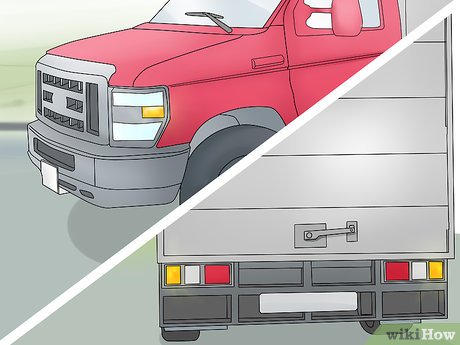
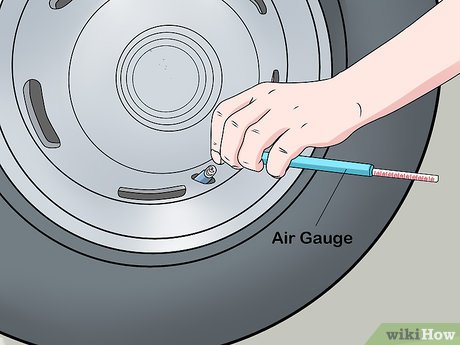
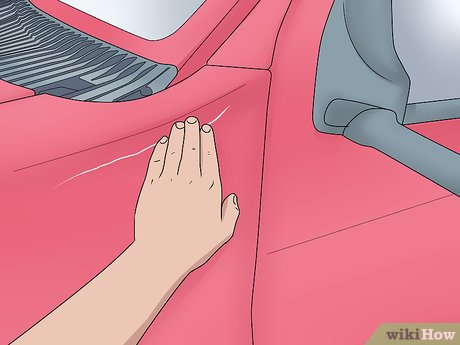
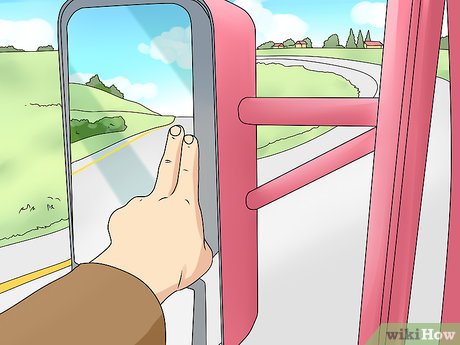
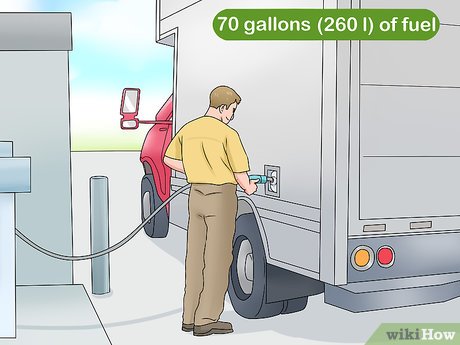
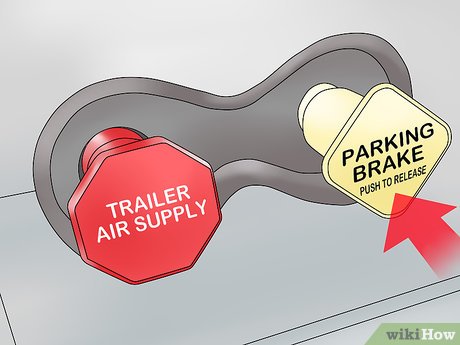
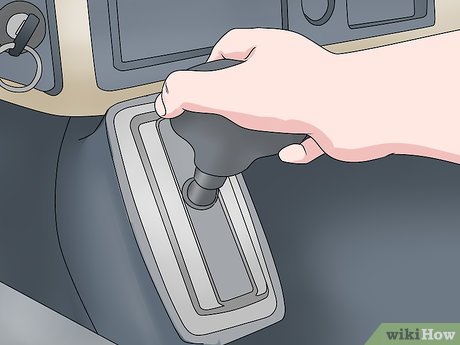
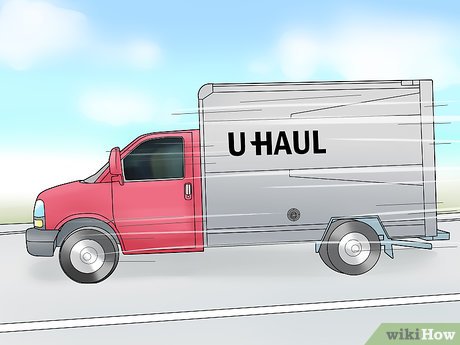
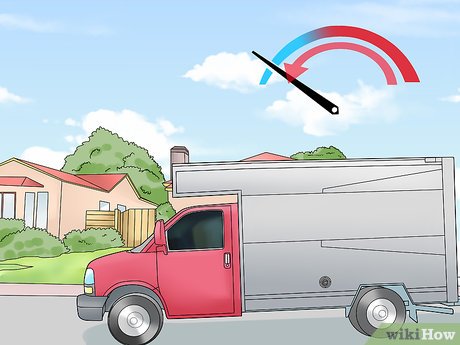
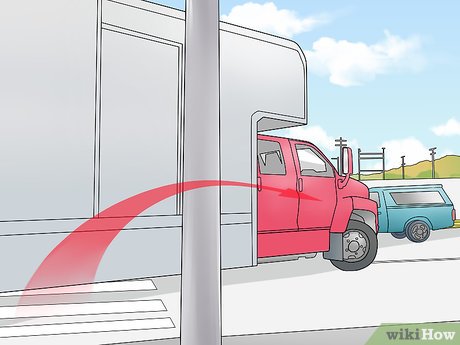
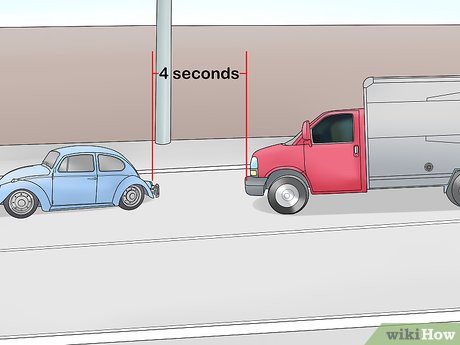
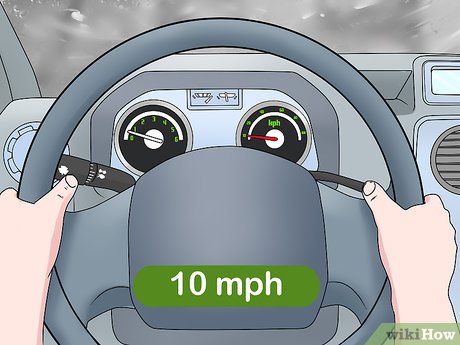
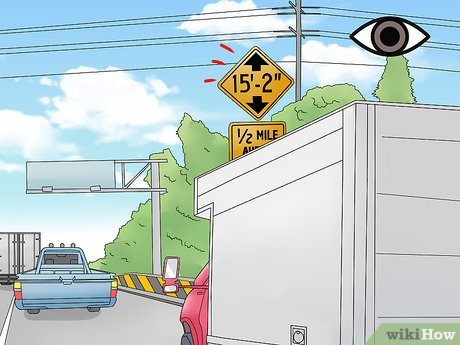
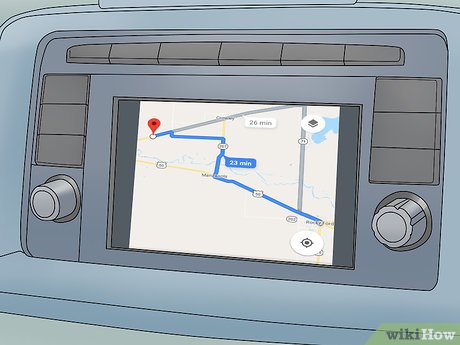
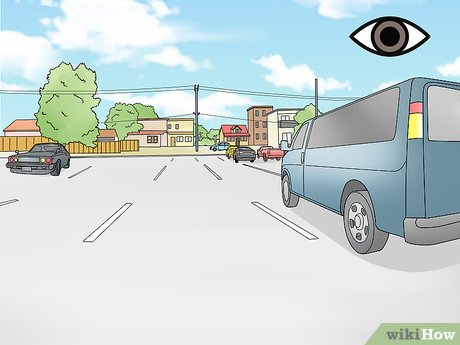
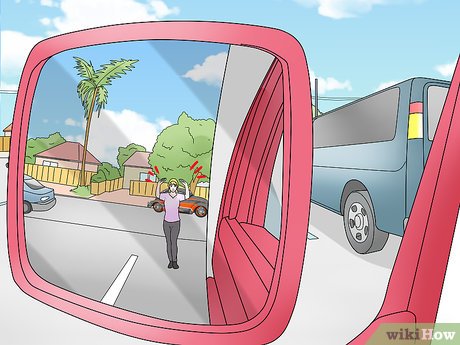
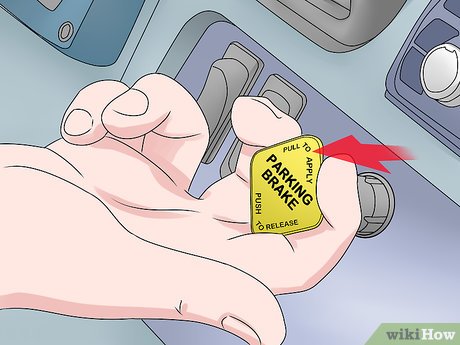
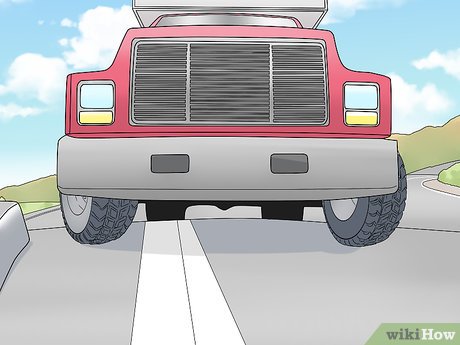
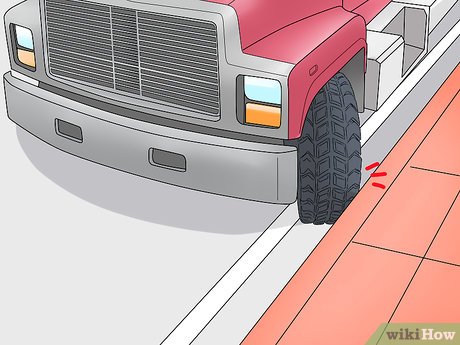
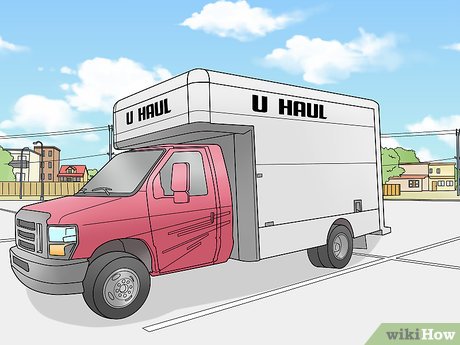
 How to Drive an Excavator
How to Drive an Excavator How to Drive an SUV
How to Drive an SUV How to Use the Rear View Mirror
How to Use the Rear View Mirror How to Drive a Car Safely
How to Drive a Car Safely How to Steer Your Car
How to Steer Your Car How to Drive a Car With an Automatic Transmission
How to Drive a Car With an Automatic Transmission